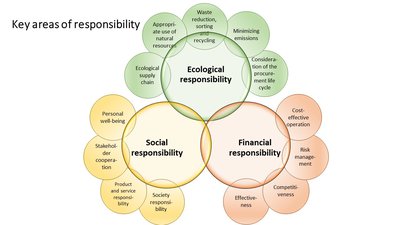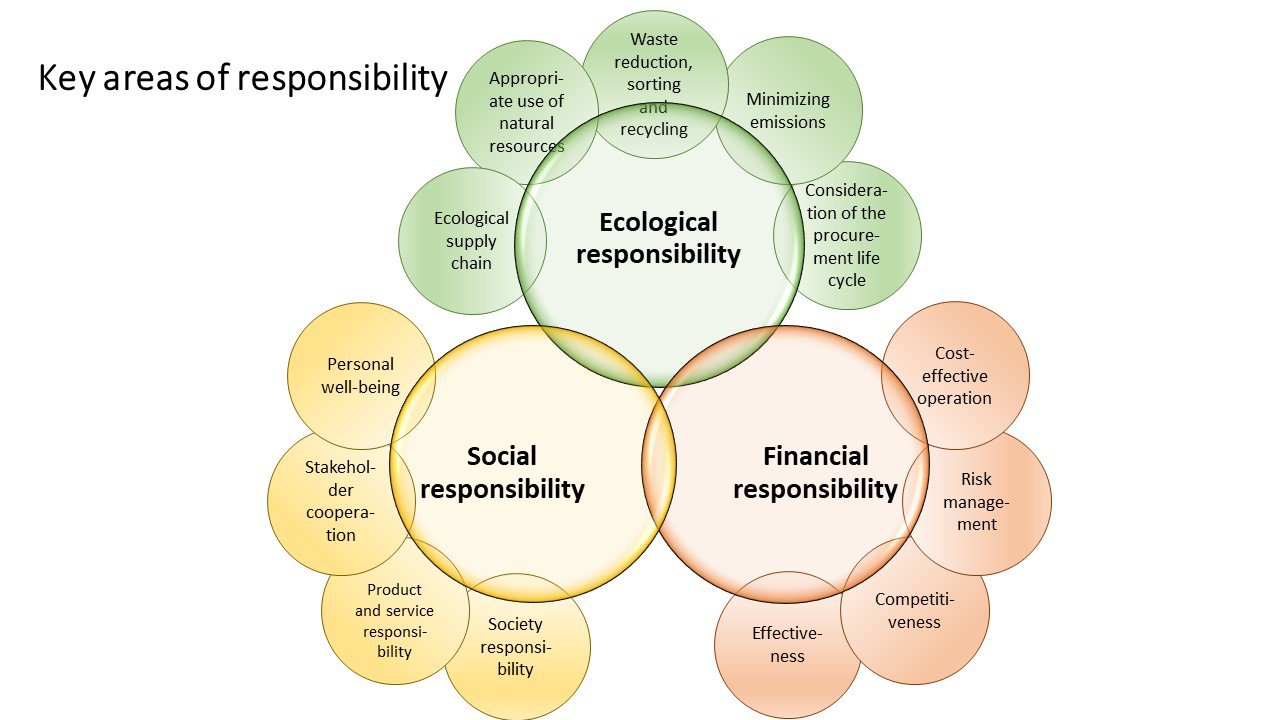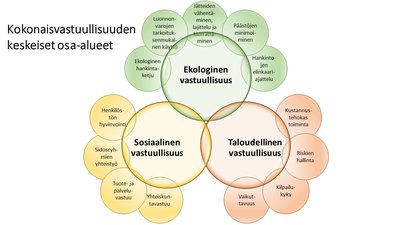Necessary Steps
Plan your organisational efforts by choosing sustainability aspects from the list of items below. Implement your choice in a way that fits your own operational context.
Areas for improved sustainability and some of their aspects:
- Food: healthy food and (nutritionally) balanced meals and menus, organic food, plant-based food, climate-friendly products, vegetarian diet, vegan diet, biodiversity, animal welfare, and sustainable fisheries.
- Supply chains: transparency in economic and legal dispositions, short supply chains, fair competition, reduced transportation distance, food safety, reliability and trust, and food security and communication. Further sustainability aspects may relate to regional sustainability developments, local food culture, and heritage food.
- Work: fair payment, transparent and safe working conditions, competent management, personal development, career paths, and equal opportunities (gender, age, background).
- Customers: comfortable and friendly eating environments, tasty and healthy meals, fair or (partly) subsidised prices, free meals, and transparency about food items/meals (for example, organic certification or information about the origin of the food or presence of allergens).
- Stakeholders: collaborative activities, involvement through discussions and consultations, co-creation, and communication.
- Efficient use of resources: efforts in saving water, electricity and chemicals, using environmentally friendly chemicals, reducing single use plastics, and avoiding food waste as well as recycling redundant equipment. When reconstructing or building new kitchens, plan cooking methods (cook and serve, cook and chill, cook cold) and serving modes (portions, self-service) as effectively as possible in terms of using resources.
More Issues To Consider
- The “sustainable meal” is an ideal worth working towards. Go step by step and use your learning resources.
- Share your successes, even small ones.
- It is important to stay focused and alert to changes in social and regulatory attitudes and developments in the area of sustainability.
- Many sustainability recommendations, labels and programs exist, and a number of tools can be found in this sustainability toolkit and on other sites.
- New, (co-)creative, and local aspects in alignment with the concept of sustainability can be introduced into public meal provision, such as bread baked from heritage grains.



